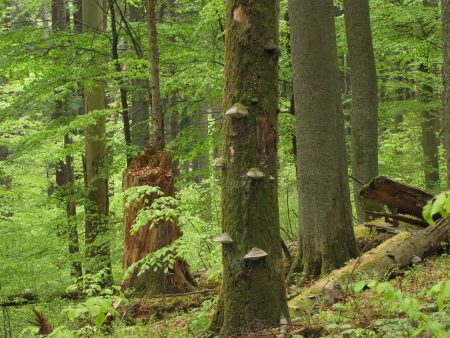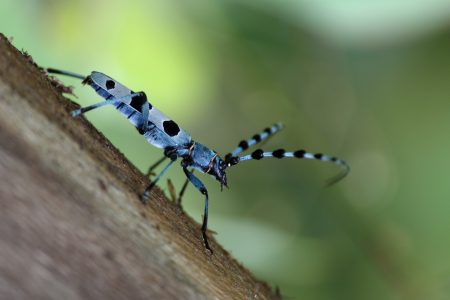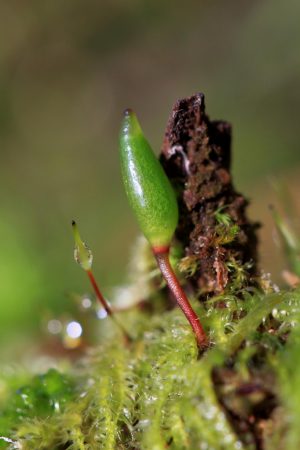Information on Dobročský prales
County: Banskobystrický kraj
District: Brezno
Parish: Čierny Balog
Area: Veporské vrchy – 6 km south of Dobroč, end of the valley Brôtovo. Buffer zone reaches the valley Za Dlhý grúň
Site of community interest: from 2004
Core zone: 103,85 ha
Buffer zone: 100,44 ha
Altitude range: 700 – 1005 m a.s.l.
Forest vegetation zone: fir-beech
Climate: cold (average yearly temperature 5°C) and humid (average yearly sum of rainfall 905 mm)
Substrate: granodiorites to silicious diorites, slated granites
Soil: ambisols dominates, deep to very deep soils with the high level of humus.
Dobročský prales Primeval Forest
Primeval Forest is a result of interference free natural development of all elements of the forest. It is typical by its special appearance, shape, structure and presence of all forms of life, many times depending on the existence of such type of forest. The primeval forest is also gene pool for wider and already modified area.
National Nature Reserve Dobročský prales was established to protect well maintained, original, impact-free ecosystem of Carpathian mixed nature forest in fir-beech forest vegetation zone. Significant is an occurrence of mighty old trees (400 years and more). It belongs among the oldest and most valued protected areas in Slovakia and Europe. A centre of today´s reserve (called Gerauka) was excluded form a category of economy forests in 1913. Its area was specified in 1993 and it has become a national nature reserve in 1994. it is strictly protected area with the highest (5th) degree of protection. The reserve is surrounded by a buffer zone with 4th degree of protection. Its function is to protect the most precious part of the forest from human impact. It is managed with the aim to create a forest structure and species composition similar to the one in primeval forest.
Dobročský prales was awarded European Diploma by Resolution of European Commission in 1998.
Primeval forest structure
The primeval forest follows its own development cycle, It begins with development of its smallest and youngest tree seedlings and ends with cessation if oldest individuals. Natural changes are called development stages (of growth, optimum and decay) and phases of restoration and cessation. These overlap and create characteristic appearance of particular parts of the forest.
Stage of growth – young generation with intensive growth, the mass of wood increases. It lasts approximately 120 years.
Stage of optimum – the highest of old trees is levelled, the mass of wood is the highest; the area is covered with small number of trees. The forest is dominated with the trees of the biggest perimeter. It lasts 100 years on average.
Stage of cessation – the mass of wood decreases considerably and it is distributed unevenly. The groups of old generation trees are replaced by free space and a new generation arising. It takes up the largest part of the forest, approximately 46%. It lasts approximately 100 years.
The following scheme illustrates the whole development cycle, lasting approximately 400 years. Time consecutiveness, overlapping of the stages in relation to changes in height and wood mass per hectare is shown
Tree species composition
The main tree species are silver fir, European beech, Norway spruce, which are completed with rare broadleaved tree species – maple, ash, elm. It is a fir tree with the longest life expectancy (up to 450 years) which sets the length of forest development cycle. One generation of fir covers 1,5 – 2 generations of beech tree. The best known (as well as the mightiest) tree in the reserve was the Dobročská jedľa fir with trunk perimeter of 193 cm, height 56 m and a mass of 54,9 m3. It was 500 years old and it was broken by strong winds in November 1964. The highest fir tree reached 58 m (with trunk perimeter 156 cm) and it dried out in 1984. Its successor is approximately 60 m tall and it is among tallest trees in Europe.
Fauna of Dobročský prales
Fauna of Dobročský prales in characterised by elements of western Carpathian mixed forests of mountain degree. The forest creates conditions of a rich composition of invertebrates (especially insects) and vertebrates, dominated by bird species.Cavity nesters have ideal conditions here, for example owls (tawny owl, Eurasian pygmy owl), piciformes (woodpecker, black woodpecker) and passerine species (collared flycatcher). In general, it is a place with high representation of protected species of vertebrates on national as well as on European level .
.
Dobročský prales is part of large carnivores (bear, lynx and wolf) home range. The following amphibians are adapted to the mountain conditions of the forest – fire salamander, common toad and common frog. It is possible to see a blind worm on the edge of the forest and a grass snake in more humid brook habitats. The only poisonous snake, common viper avoids enclosed forest however; we can see it on open exothermic areas.
From mammals there are common ungulate game species as well as protected species of insectivores – loach and water shrew. Out of other small mammals-rodents-there are numerous species (field mice, red-backed vole, pitymys, and edible dormouse) as well as protected forest dormouse.
Is it possible to visit primeval forest Dobročský prales?
An entrance to Dobročský prales primeval forest is significantly restricted due to strict protection of its values. Forest ecosystem and its elements – plant and animal communities have developed for centuries without intentional interference from humans. Entrance to the remnant of Carpathian forests typical for this area requires legitimate reason – research, practical exercise for students and area check.
There is no specifically signposted tourist and educational train in Dobročský prales at the moment. Excursions are possible only with a guide from State Nature Conservancy of the Slovak Republic, Protected Landscape Area and Biosphere Reserve Poľana or Forests of Slovak Republic, Forest Enterprise Čierny Balog. However, the visitor still enters the area on his own risk. There is an option to see the core zone from educational trail while listening to an expert word. It is a guided service provided by civic association VYDRA, Čierny Balog. It is, however, still necessary to respect the main rules for visiting the protected area: keep on the path, do not collect minerals, plants or their fruit, keep quiet, do not drop litter, do not make a fire.
